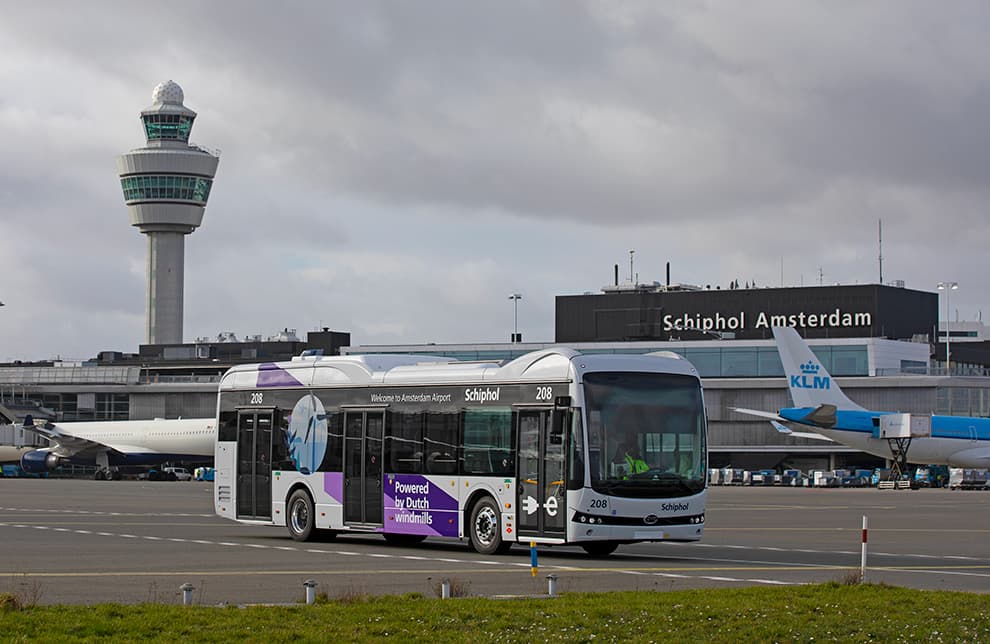A lot of attention has been paid lately to reducing nitrogen emissions from combustion engines. We have already taken many measures to reduce emissions at Schiphol and now we’re going the extra mile – for instance, by using electric buses and taxis, among other things.

Published on: 14 February 2020
Is nitrogen harmful?
Nitrogen itself is harmless. The air that you breathe consists of 78% nitrogen (N2). The discussion that is going on now is about nitrogen oxides, or NOx – that is when nitrogen (N2) bonds with oxygen (O2). Those nitrogen oxides can be harmful if there is too much of this in the air, you breathe it in or if it settles in nature.
How to nitrogen oxides form?
Nitrogen oxides are mainly released when fossil fuels are burnt. Traffic, power plants and industry are the main sources of nitrogen oxides. That includes the aviation industry, although its contribution is small. The emissions from combustion engines ensure a higher concentration of nitrogen oxides in the air, and those particles also end up on the ground.
What Schiphol is doing about nitrogen emissions
Schiphol is committed to combating harmful particle emissions, such as nitrogen oxides, CO2 and ultra-fine dust. All of our Dutch airports have been powered by Dutch wind energy since 2018 and a large part of our fleet is electric. We also encourage and support sustainable traffic to and from the airport and we ask planes with less engine power to taxi with us. We have prepared an action plan to show what else we do to reduce emissions.